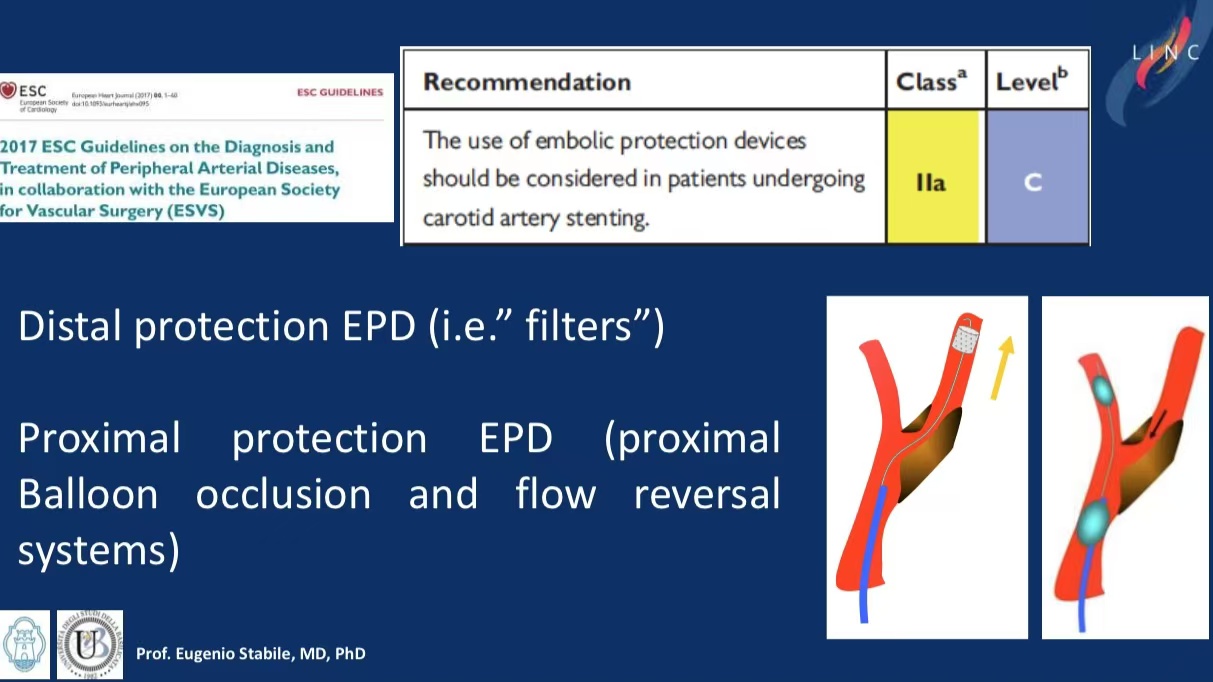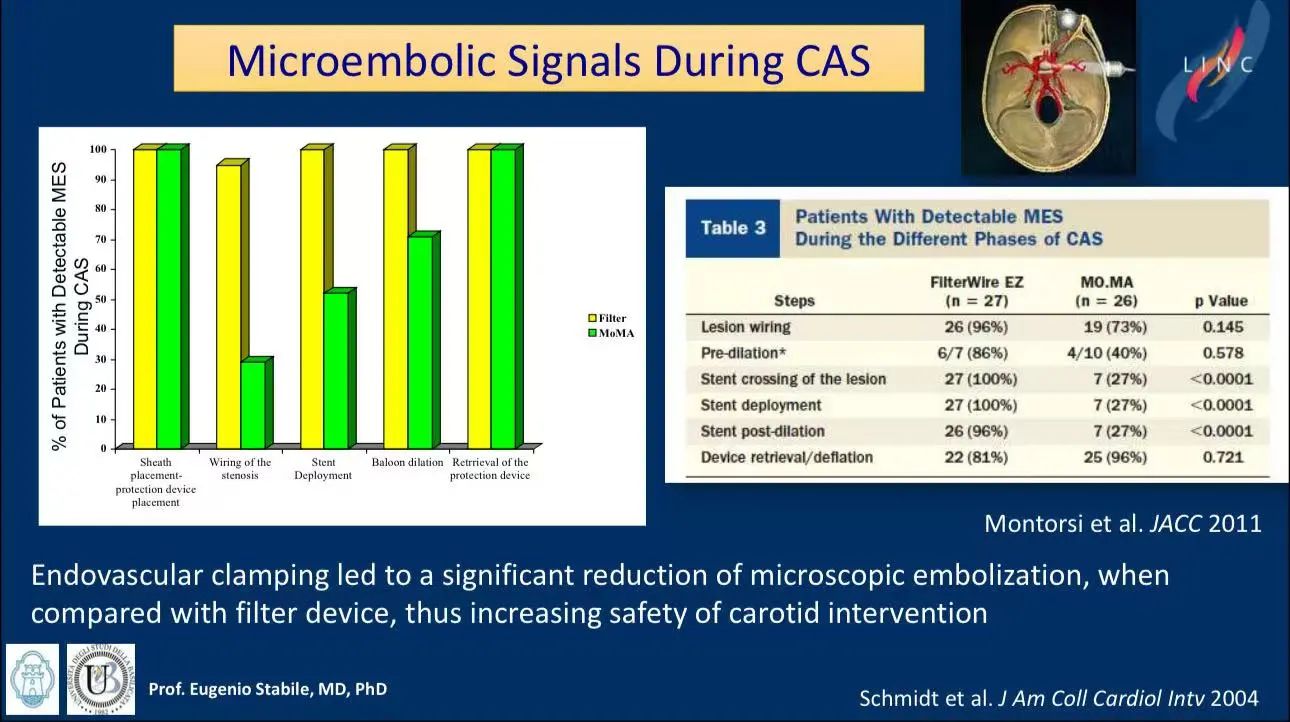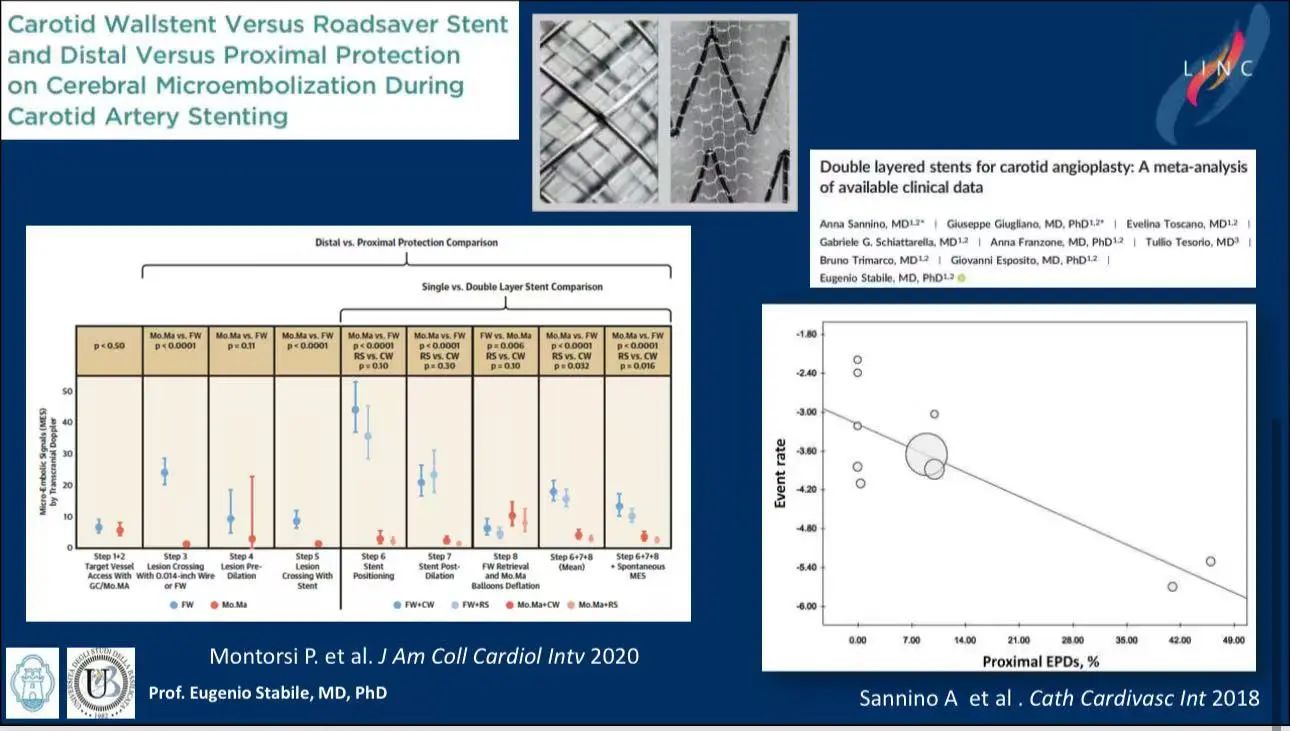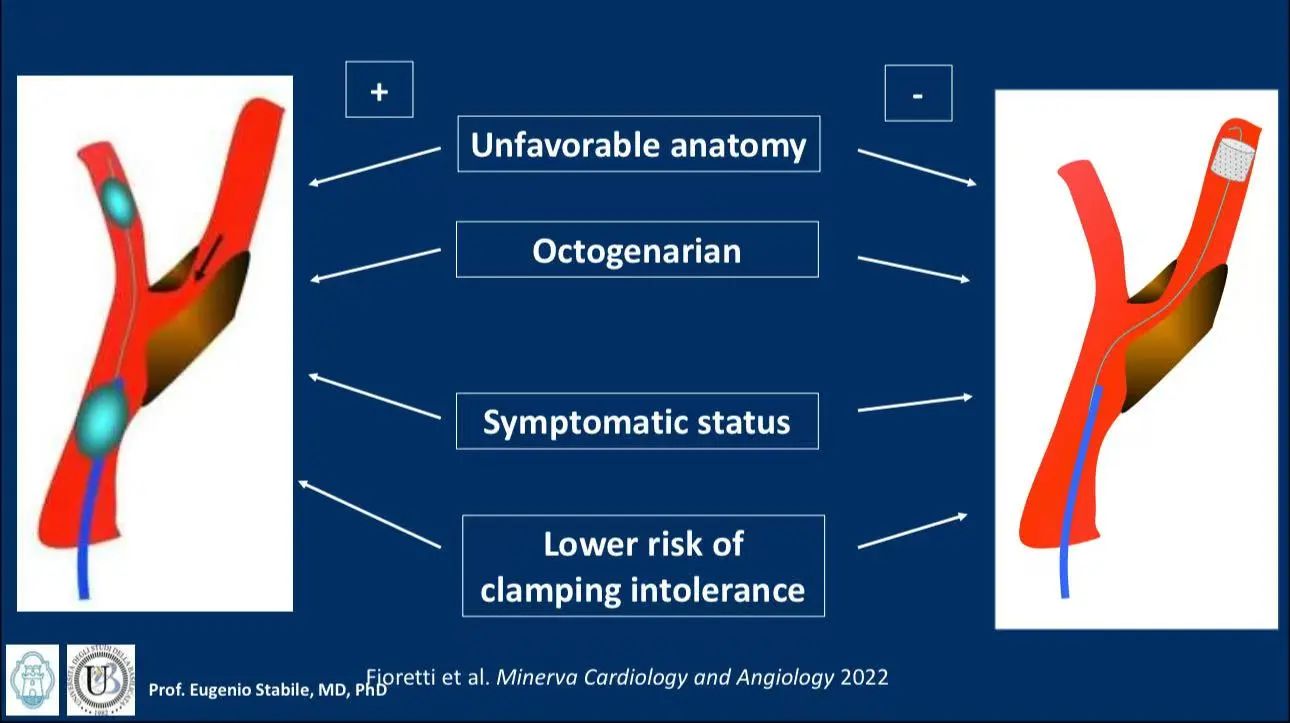Author: Prof. Dr. Eugenio Stabile
Institution: University of Basilicata, Italy; Director of Cardiology, San Carlo Hospital
Summary
This presentation reviews data on the use of proximal protection devices and distal filters in carotid artery stenting (CAS), comparing their efficacy in reducing microembolization events (MES) and enhancing procedural safety. Findings suggest that proximal protection devices significantly reduce embolization risk under certain conditions, while distal filters are suitable for patients with standard anatomical structures. Prof. Stabile highlights the strengths and limitations of each approach, noting the critical role of operator expertise in CAS outcomes.
Technical Comparison of Proximal and Distal Protection Devices
• Proximal Protection Devices: Using balloon occlusion and reverse flow systems (e.g., MoMA device), proximal protection effectively reduces MES in CAS, especially for patients with irregular lesions. Studies indicate that proximal protection is more effective than filters in minimizing microembolization risk.
• Distal Filters: Suitable for standard carotid anatomy, distal filters are relatively easy to operate but offer limited embolization protection for complex lesions. They perform well in patients with lower microembolization risk but may be restricted in cases of severe calcification or tortuous vessels.

Clinical Study Data
•Schmidt et al. (2004): Compared MES rates between proximal protection and distal filters, finding that proximal protection significantly lowered microembolization risk, highlighting its advantage in high-risk patients.

•Montorsi et al. (2020): A large meta-analysis confirmed that proximal protection reduces MES incidence in high-risk lesion patients, with operator expertise playing a decisive role in CAS outcomes.

Special Patient Groups and Clinical Applications
• Elderly and Complex Anatomy: For patients over 80 or with challenging anatomical features, proximal protection offers significant embolization prevention benefits, though operator experience is essential.

• T-CAR Technology: Studies suggest that T-CAR combined with proximal protection devices can reduce MES in complex cases, proving especially beneficial for high-risk patients requiring strict embolization control.

Conclusion
1. In CAS, proximal protection devices provide superior protection for high-risk lesions and patients with complex anatomy.
2. Operator expertise significantly impacts CAS outcomes, with advanced techniques like proximal protection and T-CAR improving CAS safety when appropriately applied.
3. Future randomized controlled trials will further investigate optimal use scenarios for CAS protection devices.
Contact Us
• Email: endovascluar@simtomax.cn
The English content has been synchronized with the Vasco Knight account. For more international information, please visit:
• www.vascularknight.com
• Facebook: Vasco Knight
• Instagram: knight_vasco
Let’s safeguard health together and showcase your brilliance to the world!


